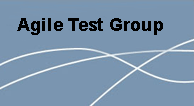
The following countries accept the CE mark for product certification. The list includes the
original 15 European Union (EU) countries, all new members of the EU and the European
Free Trade Association (EFTA).
Austria Poland Malta Belgium
Hungary Norway Cyprus Netherlands
Portugal Czech-Republic Iceland Slovakia
Denmark Ireland Slovenia Estonia
Italy Spain Finland Latvia
Sweden France Liechtenstein Switzerland
Germany Lithuania Turkey Greece
Luxembourg U.K
Why should we do it?
One of the primary reasons for obtaining a CE marking for your product is to have access to
the European Union Market. This market is made up of 25 plus countries with a population of
over 430 Million people. The EU currently is the largest market for computers and office
equipment and the second largest (behind the US) in Telecommunications and Consumer
Electronics. In addition, the EU is a net importer of electronics, with over half of the imports
coming from the US or Japan.
The relatively weak dollar has made US goods very attractive in the EU. The dollar has fallen
roughly 30% in the since 2003. If you were competing against a European manufacturer in
2003 when both products cost $1, your product would now be priced approximately 30% less.
In order to have access to the this market, many products are required by law to be in
conformance with the CE standards and directives.
European National authorities have been charged with enforcement. For example, the
Department of Health, or the Department of Industry and Labor at the member countries would
be responsible for enforcement. This could be done in a variety of ways, including random
checks. The penalties for non-compliance vary from country to country. They could include
fines, removal of equipment from the market place (at the manufacturer’s expense), or even
imprisonment.
Finally, most of the CE standards that apply to products are harmonized. This means that
entry into this market only requires conformance to a single set of standards. Prior to the CE
marking directives, each country in Europe had their own set of national standards that could
be applicable to products. This significantly increased the costs of ensuring that your product
was compliant.
What is it?
The symbol stands for “Conformité Européenne” which is French for “European
Conformity”. When the symbol is affixed to a product it is the manufacturer’s declaration that
the product conforms to the essential requirements of all European directives. The essential
requirements would include Safety, public health, Electromagnetic Compatibility, and
consumer protection, among other things.
CE marking is a mandatory requirement for selling all products that it applies to into EU
Countries. It implies that the product has been subject to all applicable evaluation and
assessment procedure(s) as defined by the CE directives. CE marking is not a quality
symbol. It only indicates that the product conforms to the directives set forth by the EU. It is not
an indicator of the overall quality of the product.
The CE conformity marking must consist of the initials “CE”. Where the directive concerned
does not impose specific dimensions, the CE marking must have a height of at least 5 mm.
The CE marking must be affixed to the product or to its data plate. However, where this is not
possible or not warranted on account of the nature of the product, it must be affixed to the
packaging, if any, and to the accompanying documents, where the directive concerned
provides for such documents. The CE marking must be affixed visibly, legibly and indelibly.
What is the process for obtaining a CE mark?
For most products, the manufacturer has the obligation to ensure that a product intended to be
placed on the EU Community market is designed and manufactured, and its conformity
assessed, to the essential requirements in accordance with the provisions of the applicable
“New approach” directives.
This “self certification” process puts the responsibility for compliance on the manufacturers
selling the product into the EU. The manufacturer has several choices in assessing their
products compliance.
The manufacturer can choose to perform the evaluation and assessment themselves. In this
scenario, the manufacturer must identify all applicable standards and directives, research and
interpret the standards, evaluate the product using the appropriate testing methodology, apply
all applicable tests, and create a test report and declaration of conformity to document the
assessment procedure.
Alternatively, the manufacturer can sub-contract the assessment and evaluation to a test
laboratory specializing in European conformity. The test lab typically has the appropriate
standards and directives, has the expertise to interpret the standards for the manufacturer’s
product, understands the testing methodology necessary and has experience in creating test
reports and assist in the creation of a Declarations of Conformity that appropriately documents
the assessment process.
Some products require an evaluation by a Notified Body. Examples of these types of products
would include: many medical devices, some radio transmitters, products intended to operate
in explosive atmospheres, etc. In these cases, the manufacturer is required to provide all
product documentation, including assessment information to the notified body prior to placing
the product on the market. In practice, the manufacturer of those types of products should
work closely with the notified body to make sure their assessment documentation is in order.